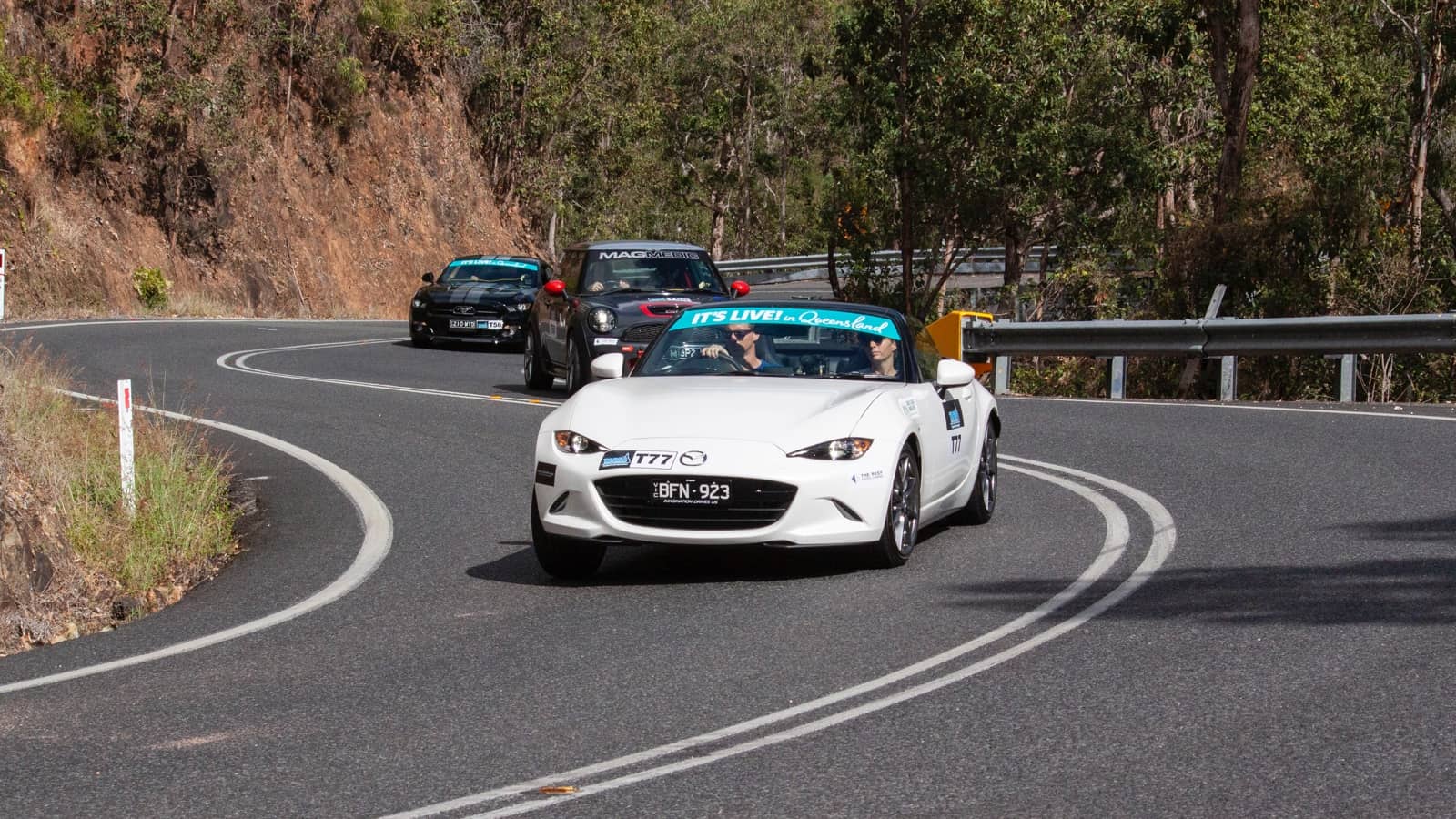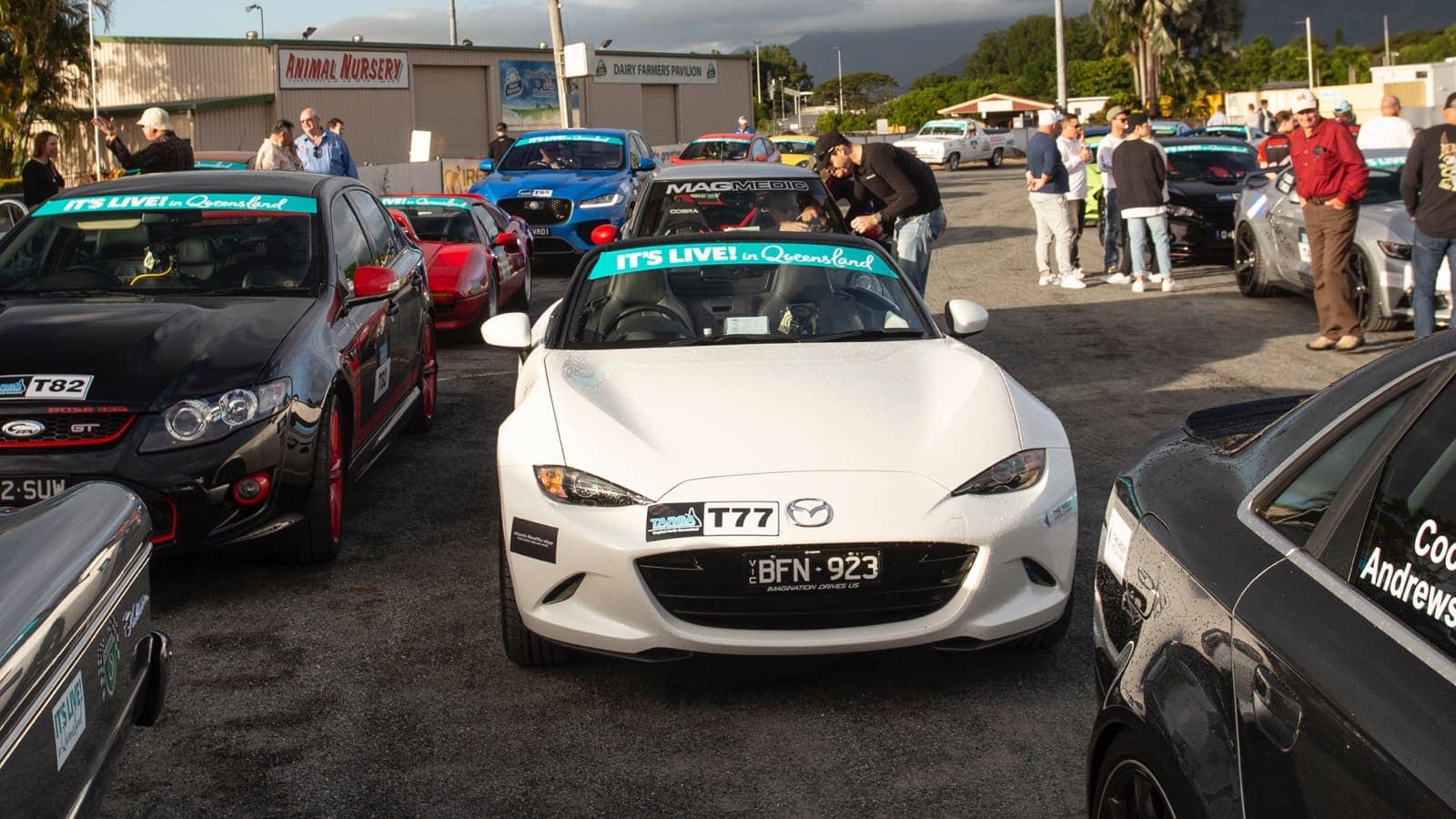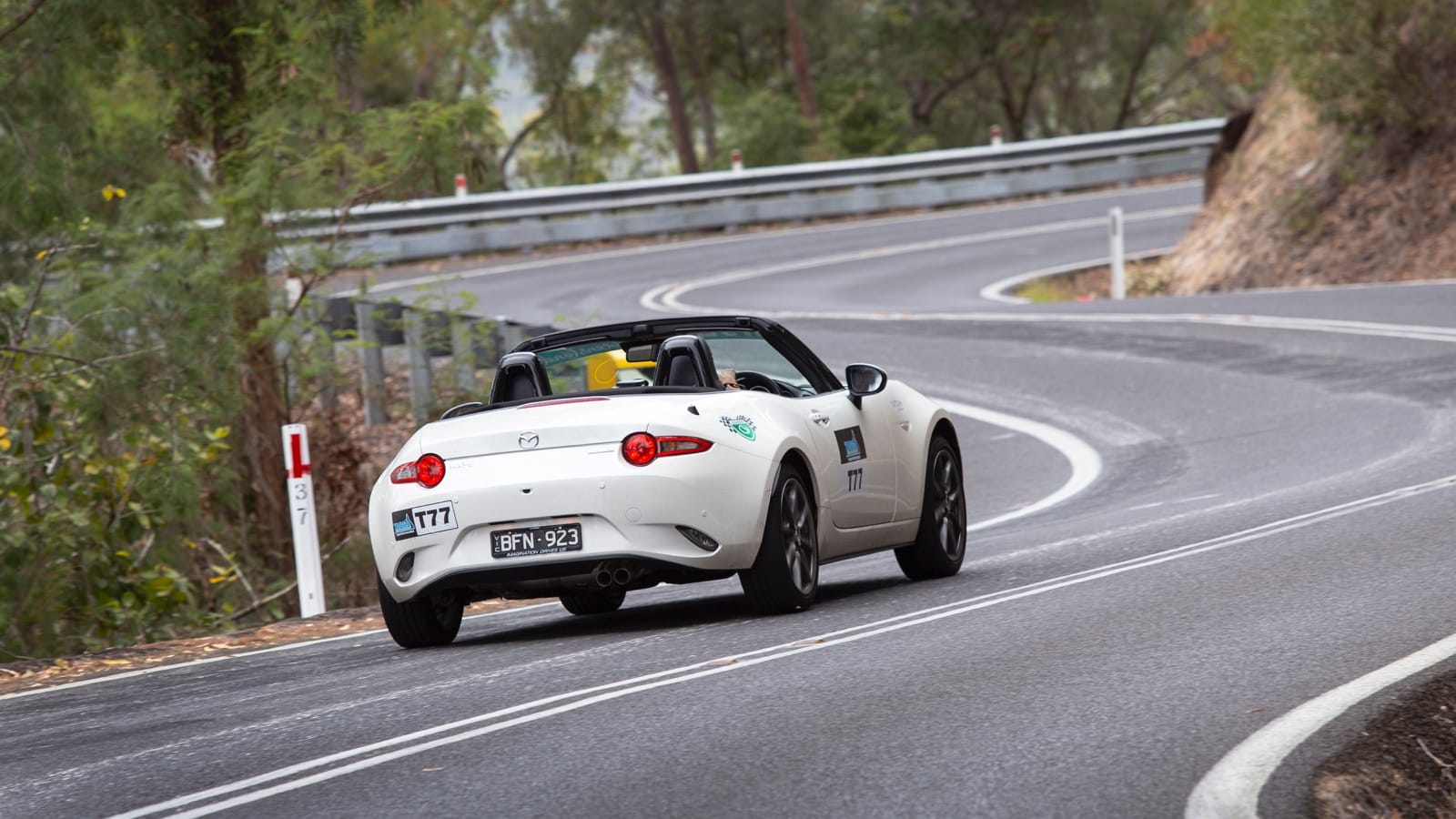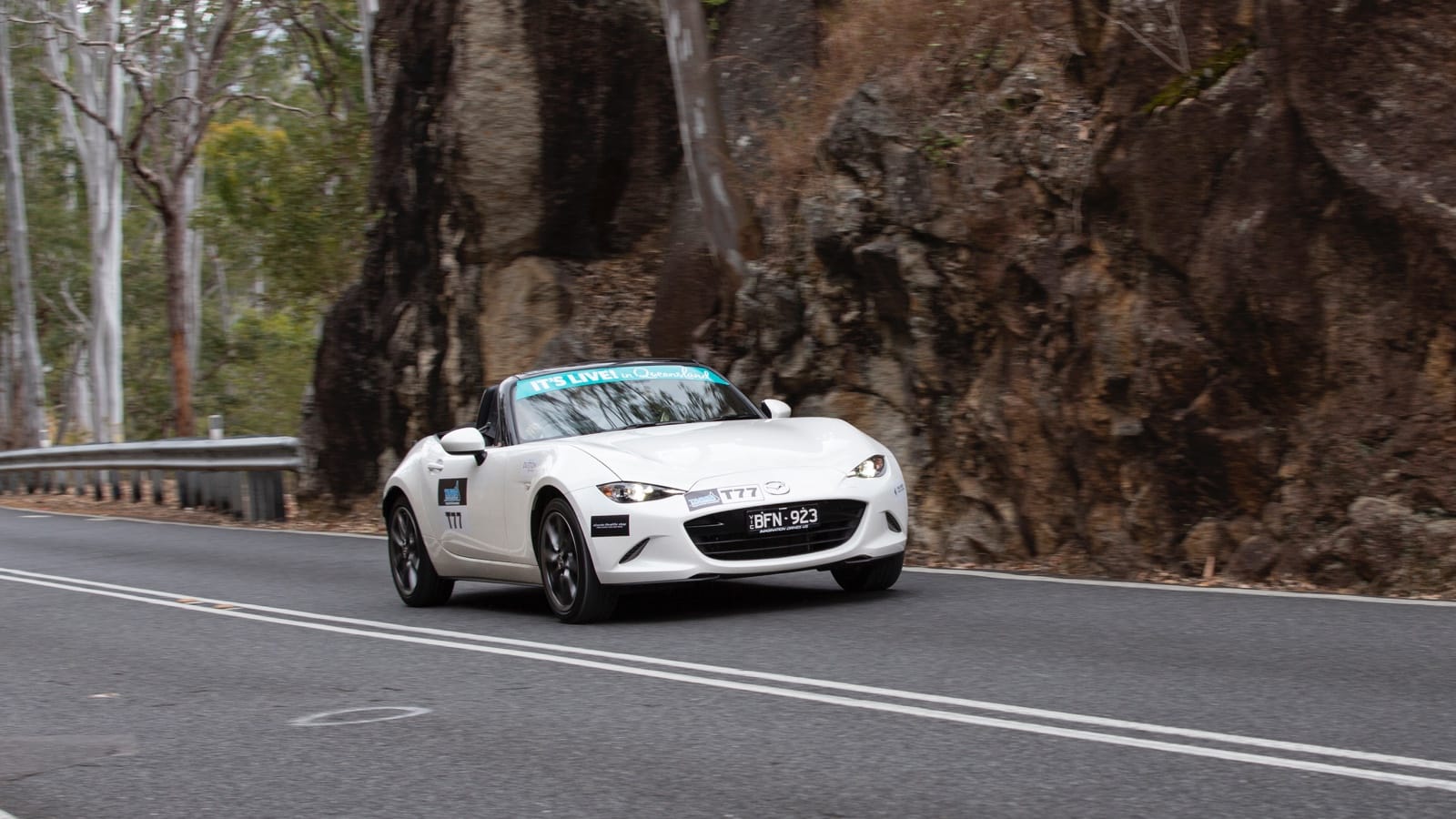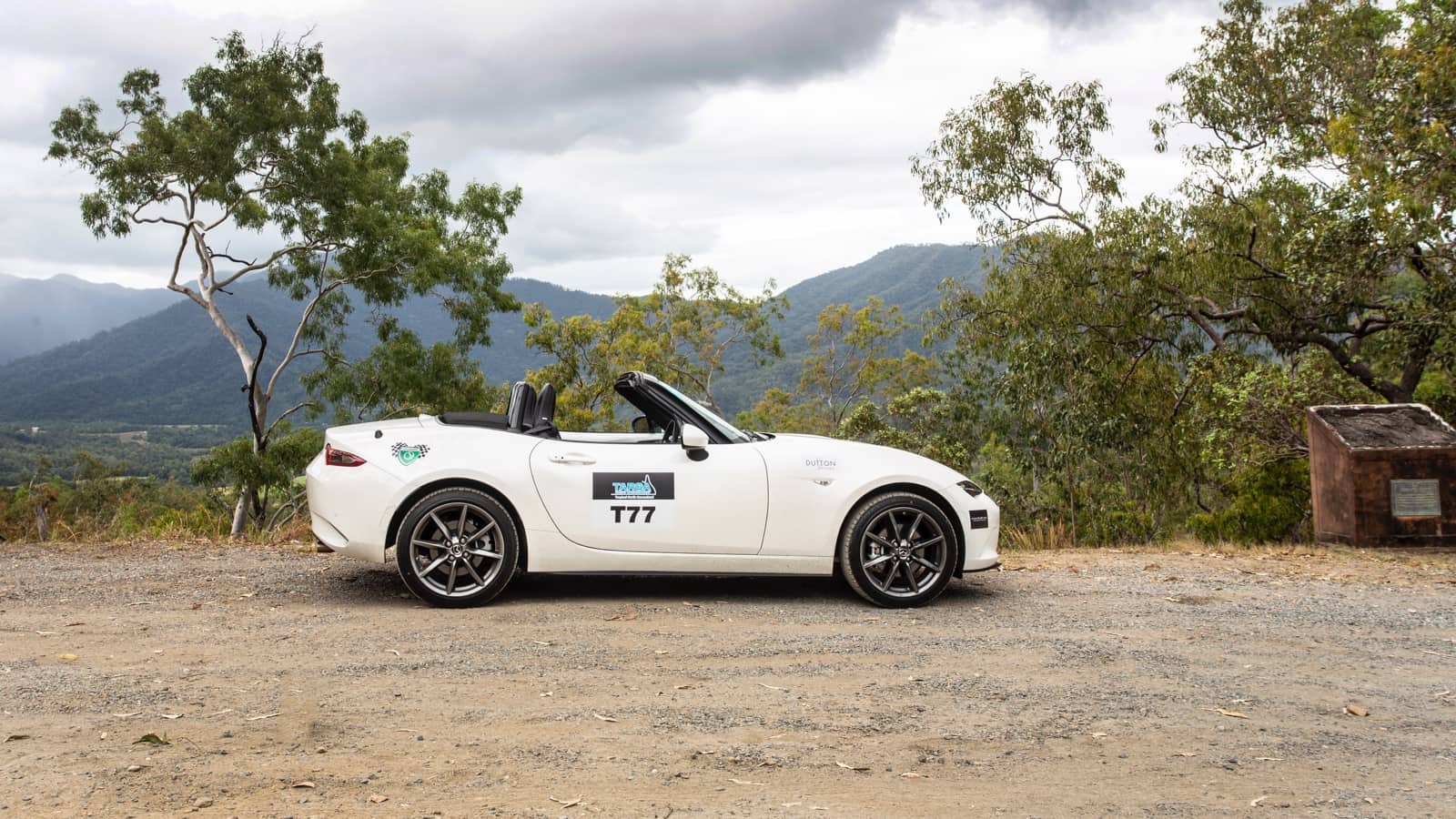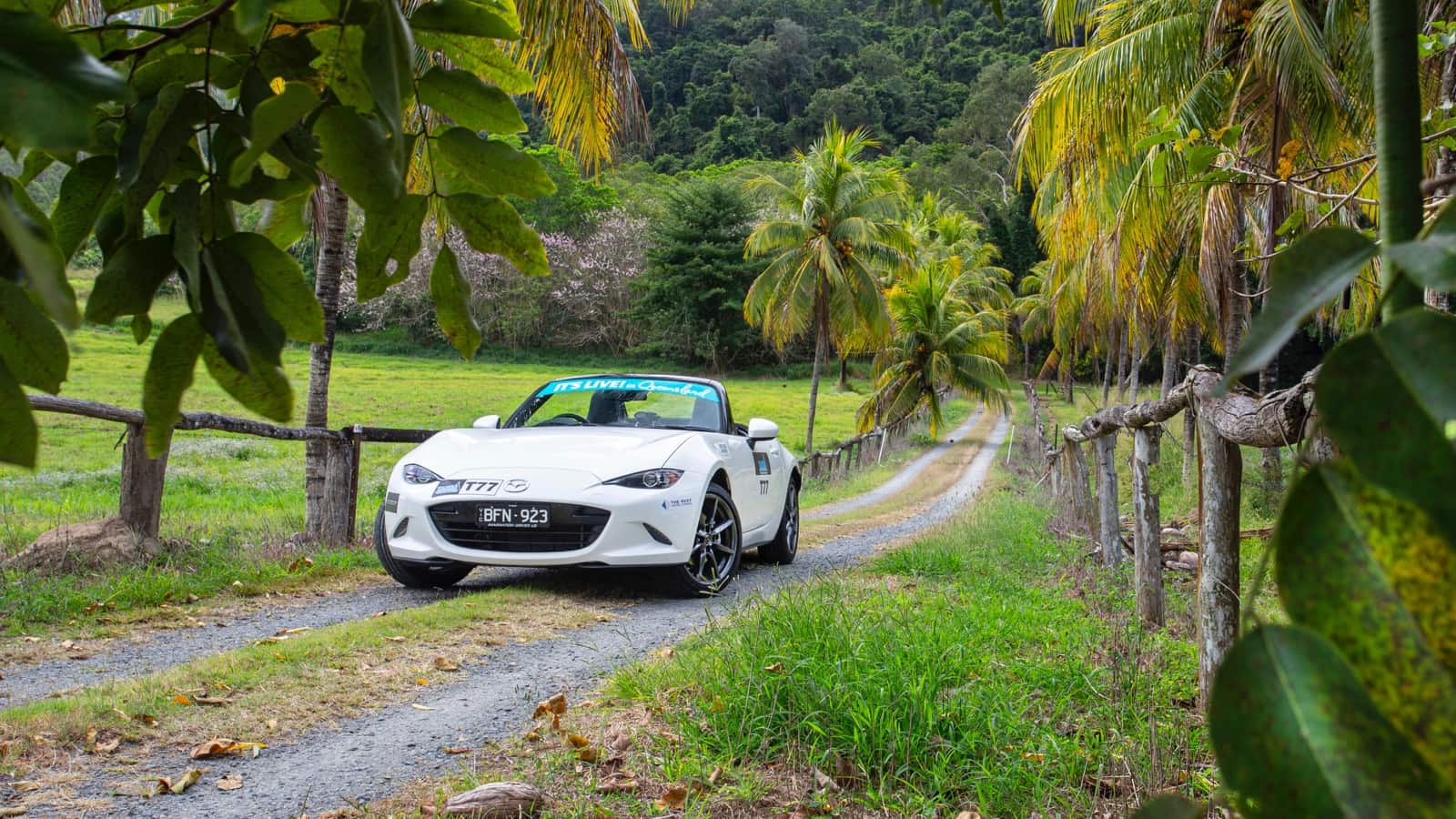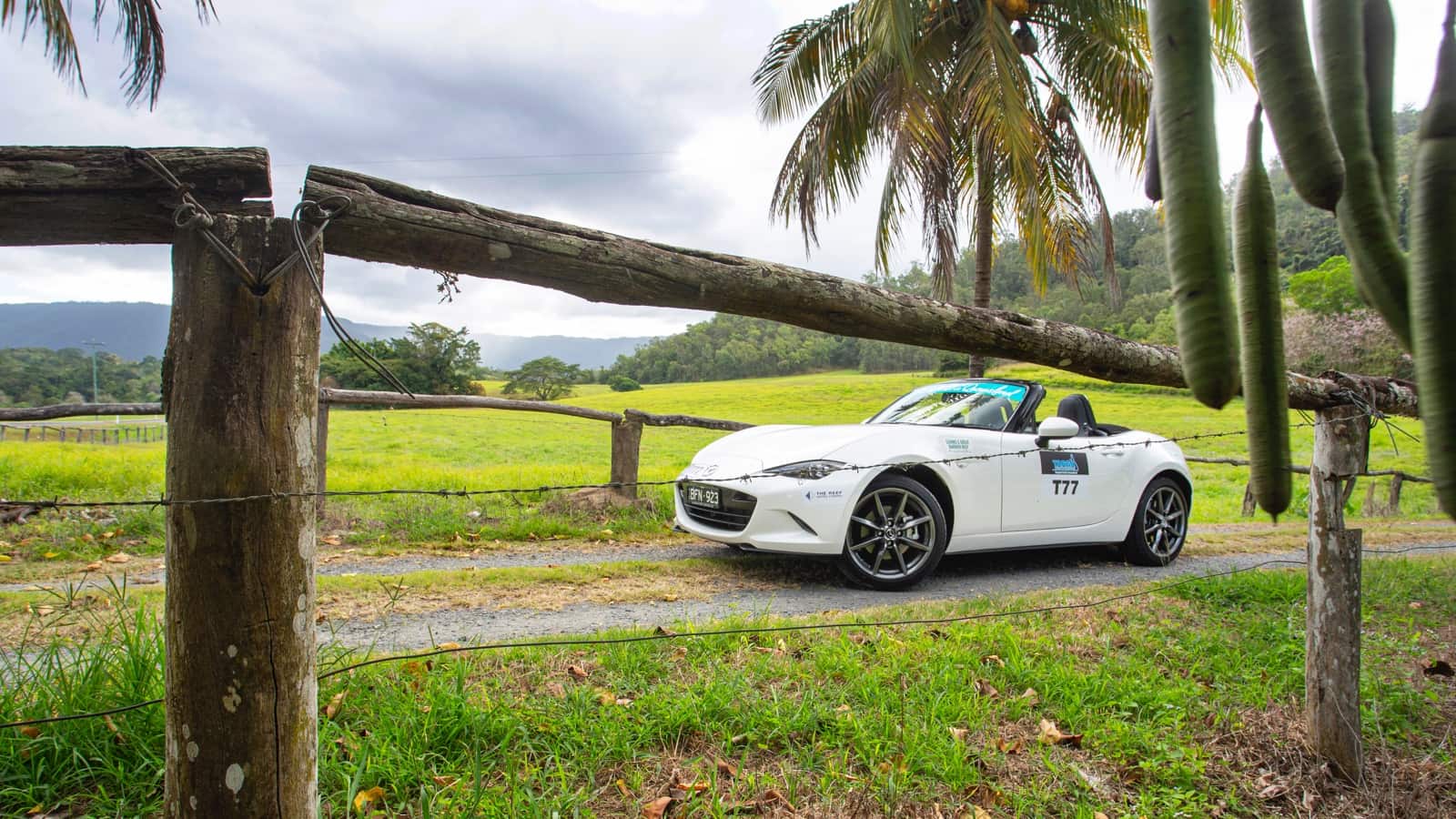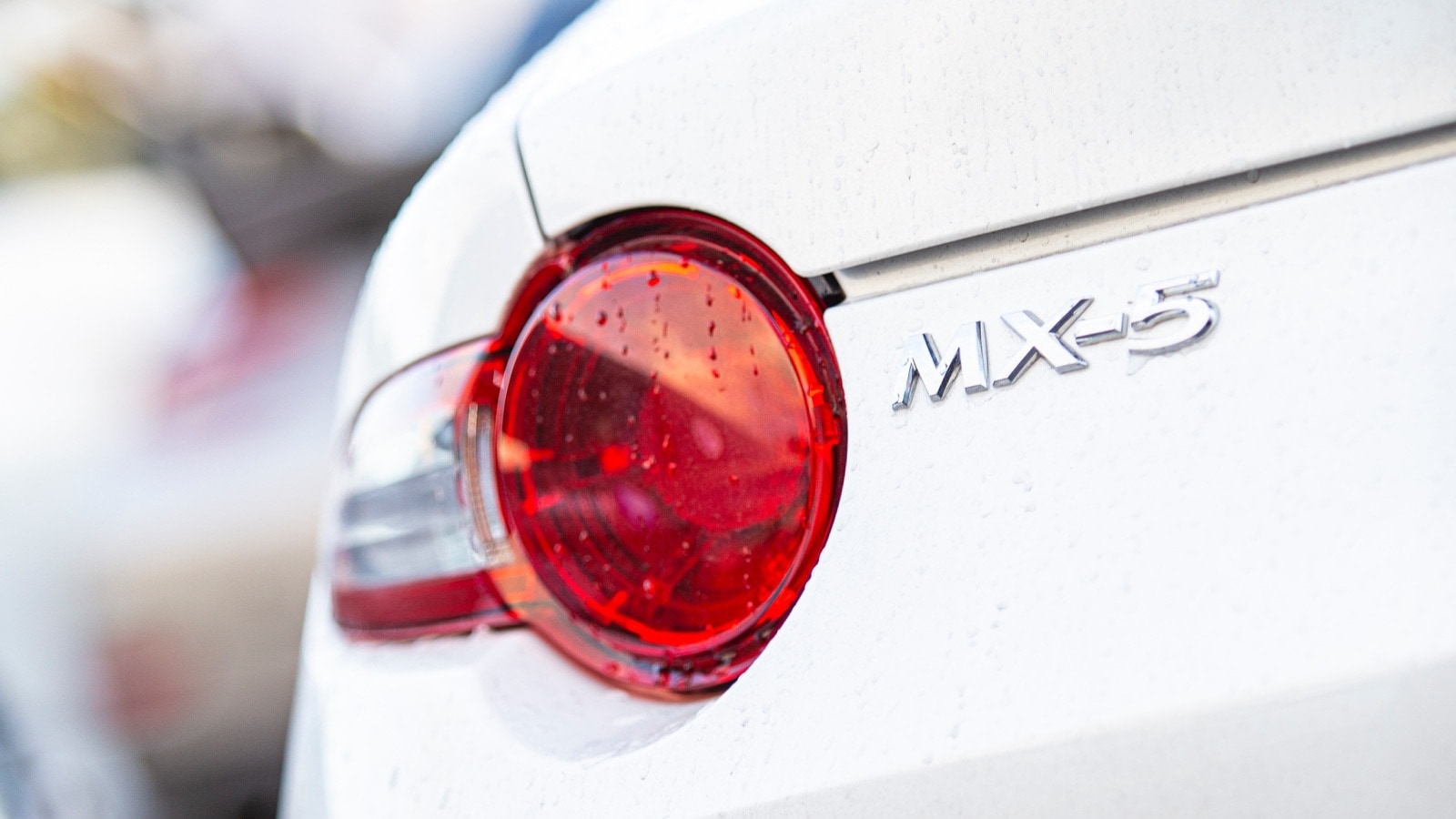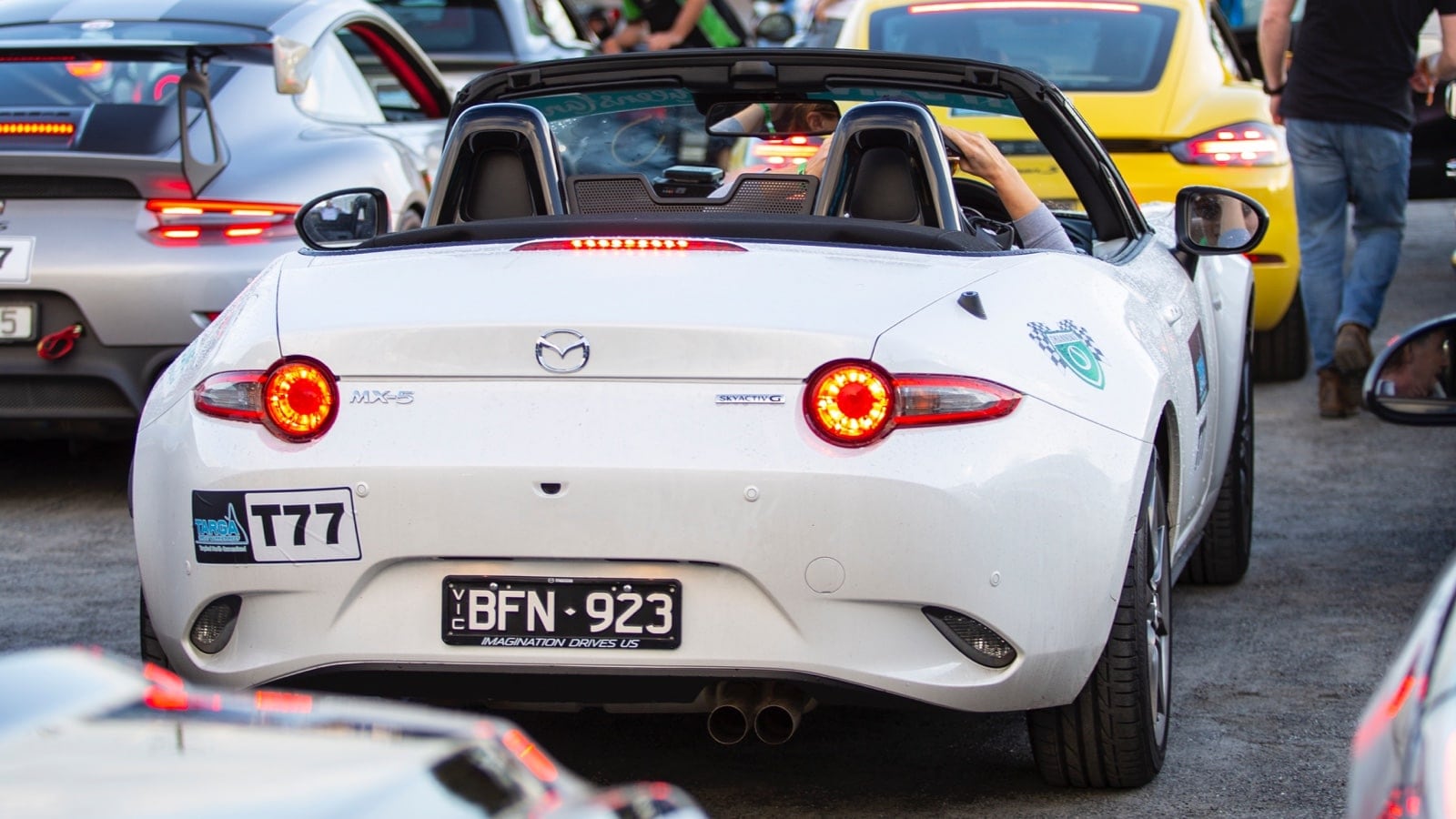Mazda MX-5
dives headfirst into Targa Great Barrier Reef
Mazda MX-5
dives headfirst into Targa Great Barrier Reef
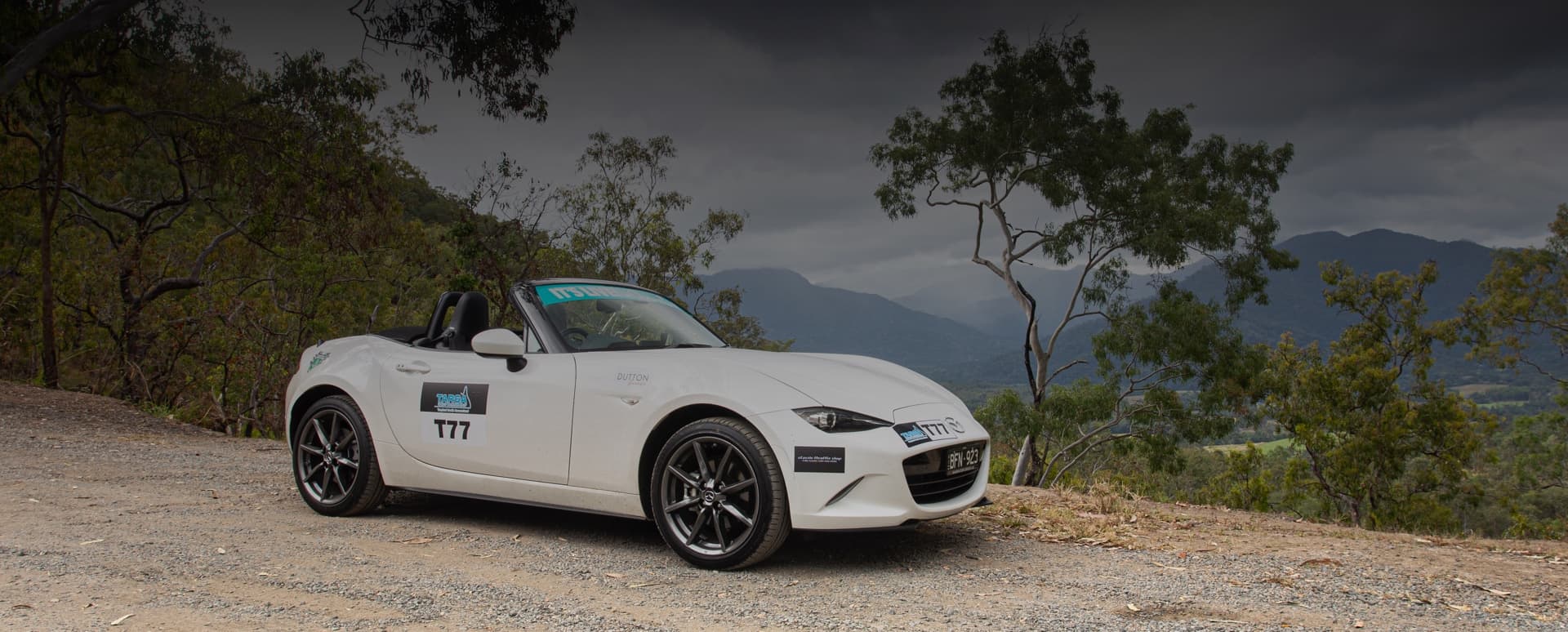

Words: Iain Curry
Photos: Paul Gobert and Iain Curry
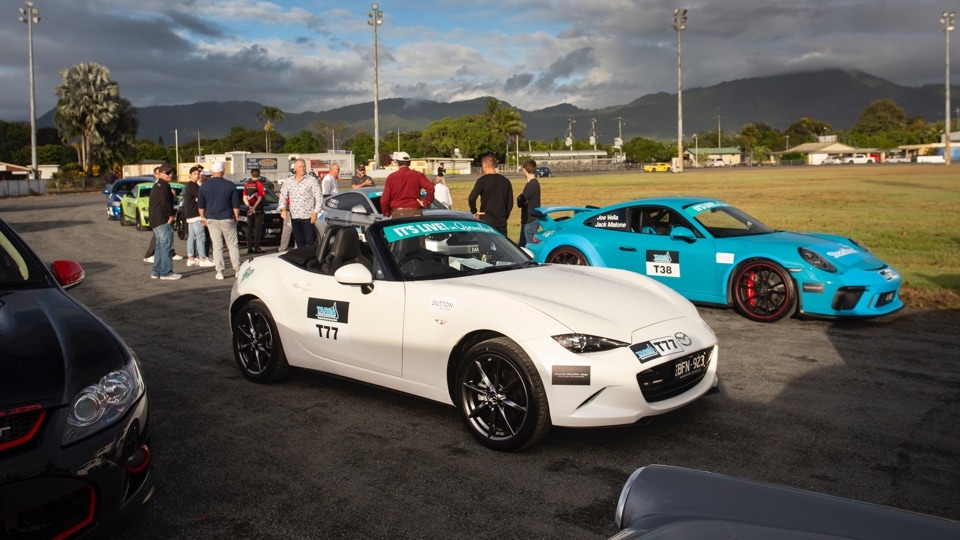
Anticipation is growing as I cruise down the highway in my new Mazda MX-5 with the top down, headed for Targa Great Barrier Reef. To my right is a shimmering ocean lapping coral reef, to my left, giant cloud-covered mountains with roads winding up through rainforest. There’s sugar cane and banana palms, elegant wooden Queenslander homes and inviting-looking rivers to cool off from the relentless sun. Until, that is, you spot the sign:
Warning: Crocodiles.
Targa Great Barrier Reef is a car rally like no other. Run by the same crew responsible for Targa Tasmania, this Cairns-based Far North Queensland Targa isn’t troubled by icy roads, snowfall or blinding fog. Instead, your biggest enemies are relentless humidity and tropical thunderstorms turning roads to skating rinks.
I look around the gathered eclectic mix of exotica, a few cars costing the same as a decent homestead in these parts. My little Mazda MX-5 is dwarfed beside some, but for the tight, windy and sometimes ‘slippy’ roads we’re about to tackle, I’m convinced my drop-top roadster’s the smartest choice. And most affordable. And probably most fun, too.
But then the iconic Mazda MX-5 has always punched above its weight, which is probably why – fun fact - it’s the most raced sports car in the world. The classic two-seat sportscar formula is no mystery. It must be lightweight and roofless, power should go through the rear wheels and, ideally for purists, the engine won’t have a turbocharger and there’ll be three pedals in the footwell, allied with a short-throw manual gearbox.
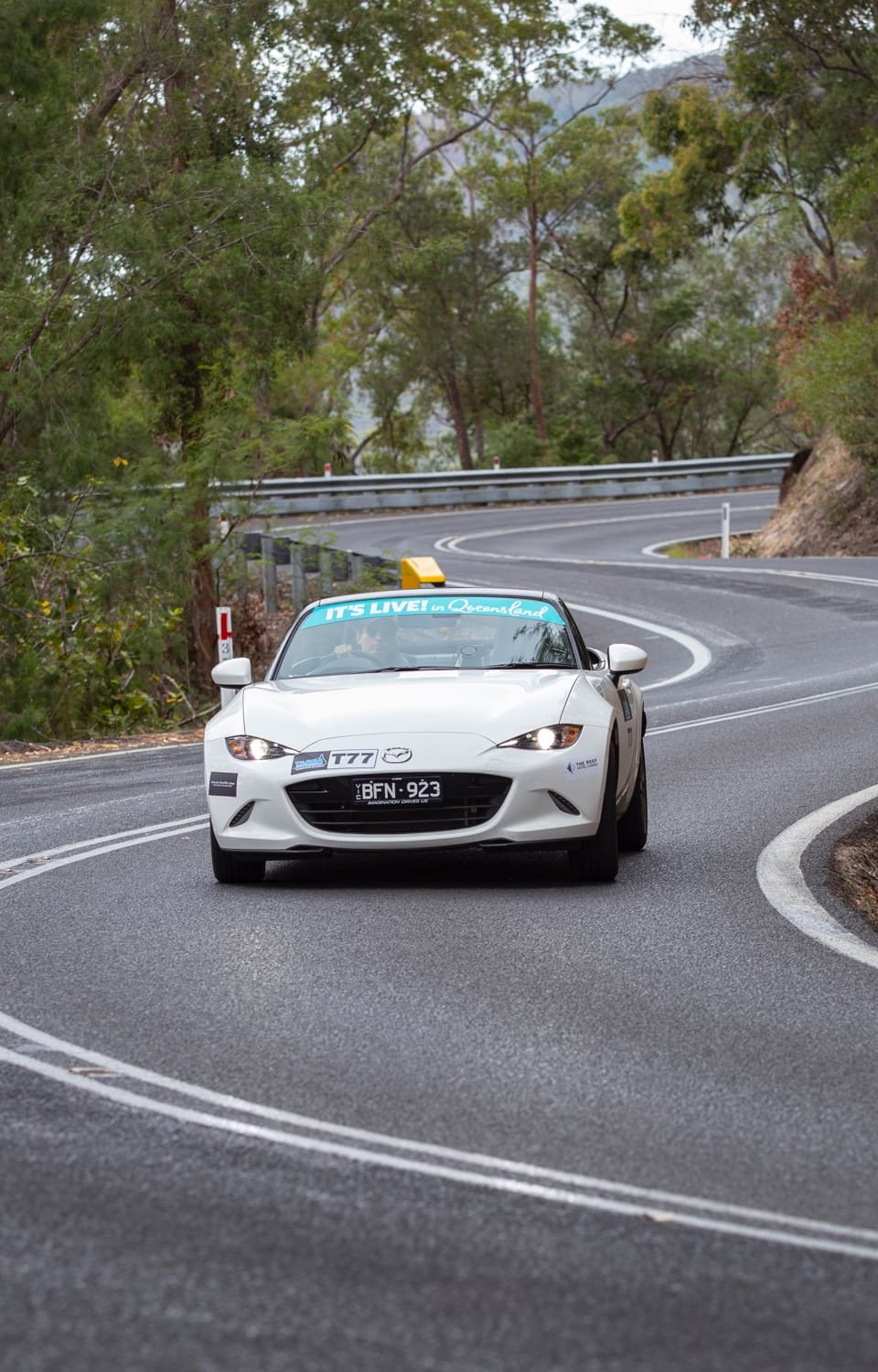
Others have tried over the last three decades, but nobody has perfected the blend quite like Mazda. Mazda MX-5 is the best-selling two-seat sports car in history – by some margin – for a reason.
You don’t need to be a racing driver to take part in Targa Great Barrier Reef. A Competition class is there for trophy-seekers, but we’re running in the Tour group over the same closed roads. You need only a basic racing license (no test involved), a registered car and a few event stickers for decoration. No helmet, harness or roll cage required, but you do need a co-driver with a road book warning of upcoming hazards. Choose your other half or a good mate and it’s an unrivalled bonding experience.
A 120km/h speed limit (monitored via an on-board Rallysafe GPS) may sound restrictive, but from the 200-kilometres of closed road rally stages the longest straight measures 100 metres. An abundance of twisty stages gives few opportunities to get up to that speed, meaning you concentrate on braking points, turn-in points and ideal lines rather than worrying about your speedo.
Then there’s the rare opportunity to always take the racing line, ignoring the road’s centre markings without fear of oncoming traffic. Bliss.
After a quick drive out of Cairns we line up in groups of eight behind an experienced Tour Leader, in our case a former Adelaide Rally champion. A marshal waves us onto the closed road stage and Boom! It’s like our own private racetrack, albeit with paddocks, cane fields and trees lining the edges rather than tyre walls. You soon experience the true abilities of your car, and there’s a healthy combination of fear and excitement – a long-known blend that makes motor sport so addictive.
While Stage 1 is something of a goat track, Stage 2 is a gift from the Gods. Gillies Range Road snakes its way nearly 20 kilometres up a mountain, through 263 corners and with a mighty 800-metre elevation change. Normally a 60km/h-restricted chore, it’s massively wide and mirror-smooth to cater for giant sugar cane trucks.
The little Mazda flies up it, keeping pace with big-power V8s and European sportscars costing three times Mazda MX-5’s price. Our car uses the updated 135kW/205Nm 2.0-litre four-cylinder engine, and I exploit every drop of the allowed 7,500rpm. With roof stowed (a three-second job) the noise reverberating off rock walls is delicious, and with the well-aligned pedals and ‘snickety’ little gear change, the drive experience is an assault on the senses.
Mazda MX-5 weighs just a few overnight bags over a tonne – a featherweight compared to most modern sportscars. Its tyres and brakes are less stressed as a result and it changes direction with rare nimbleness. Heading down the mountain I smell the cooking brakes of heavier cars up ahead, but the Mazda is happily in its comfort zone, dancing around corners on hot, grippy tyres. It’s all a wonderful, involving treat.
Across three days we tackle more mountains, loose gravel surfaces, damp rainforest climbs and close to 1000 kilometres of closed road and transport stages. Gratifyingly we suffer no overheating, brake fade or worn tyres – unlike a few others. They may share rally tales of miracle repairs to reach the finish line, but our hard-luck story begins and ends with driver and passenger suffering slightly sunburnt noses having left the roof down a stage too many.
I could go on about Mazda MX-5’s grip levels, steering feedback, poise, communicative chassis and bang-for-your-buck performance, but that’s over-complicating things. It’s simply incredible fun. A smile-inducing roadster compelling you to seek out the country’s finest roads. Do so on a Targa event with no fear of oncoming traffic and, honestly, life struggles to get much better.
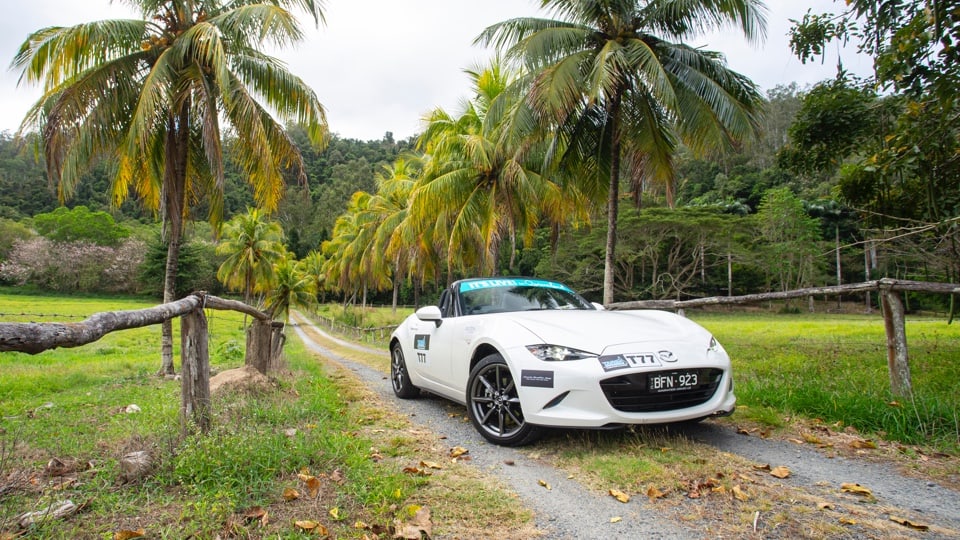
For more information about Mazda MX-5, be sure to follow the link below.
